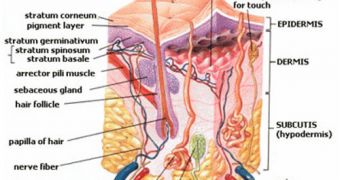A scientist at the Orebro University in Sweden has recently developed a new method of allowing severely hearing-impaired people to regain at least a part of their former sense. The expert, engineering researcher Parivash Ranjbar, has developed a machine that is capable of transposing sounds into vibrations that, when applied to the skin, can deliver an auditory sensation to the brain of the patient, AlphaGalileo reports. The investigator says that the new apparatus could also be modified to suit the needs of children as well.
“After brief training, one of my trial subjects could even understand what was being said in a conversation,” Parivash Ranjbar explains. He will present his findings in a new dissertation that he will give at the university. According to the device's specifications, it is able to allow its wearer the ability to distinguish between sounds such as voices, telephones, birdsong, cars, thunder, rain, and wind. The fact that it can also be used to make out individual words was something unplanned for, but that turned out to be a definite plus, Ranjbar adds.
Unlike the ear, which has spent millions of years evolving to a point where it can clearly make out sounds ranging in frequencies between 20 and 20,000 Hertz, the skin is ill equipped for precise hearing. In previous studies, experts have determined that the skin cannot make out frequencies that are higher than 800 Hertz, and also that it cannot separate sounds that are too close to each other.
“The deaf-blind already have an acquired ability to glean information from vibrations. For example, they can recognize the step of different individuals through the vibrations in the floor, or feel the vibrations from a pot when the water starts to boil. But with Monitor, they have entirely new possibilities of keeping up with what’s going on in their surroundings, and this makes them feel much more secure,” the expert adds.
“It was easy for the trial subjects to learn to use it, even for those who were born deaf and therefore have no sound library to fall back on.” Ranjbar shares. “Many more aids can be developed using this technology, such as helping people who are deaf and blind to ride horseback, using vibrations that communicate their position on a track. I’m constantly getting new ideas when I see the needs and possibilities actually exist,” he concludes.

 14 DAY TRIAL //
14 DAY TRIAL //